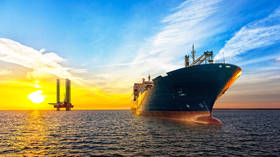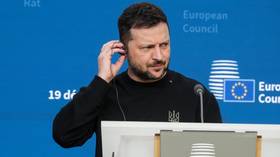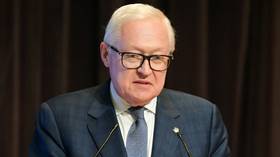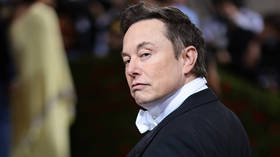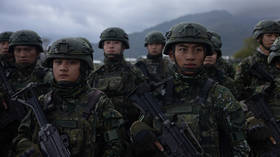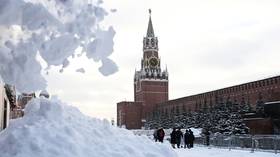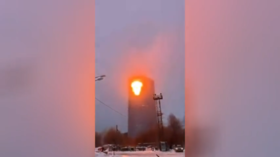India seeks to increase exports to Russia – envoy
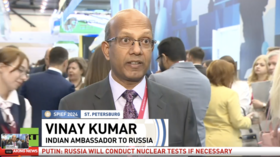
India and Russia should take advantage of new opportunities in each other’s markets and increase the sustainability of rapidly expanding bilateral trade, New Delhi's envoy to Moscow has told RT.
Speaking on the sidelines of the St. Petersburg International Economic Forum (SPIEF), Ambassador Vinay Kumar told RT of the plans to further boost a growing trade relationship.
“In the next five years the work will be on expanding the verticals of our cooperation in terms of trade and investments. Our two countries share big complementarities – India’s population dividend, India’s market, Russian technology and expertise in processing and manufacturing – we need to bring it closer together and increase India’s exports to Russia,” Kumar said.
Bilateral trade has increased almost three times in the past two years, with India ramping up energy, fertilizer, and coal exports from Russia, the envoy said. Trade between the two countries stood at $65.7 billion in the financial year ending March 2024, a 33% jump over the previous year. However, New Delhi’s trade deficit with Moscow increased by 33% to over $57 billion in the 2023-24 financial year, according to Indian Commerce Ministry data. The trade deficit has grown eightfold since 2021-22.
Balancing trade is a key priority for the two countries to sustain the growth momentum, Kumar said. “We need to deal with market access issues, [explore] new opportunities for Indian goods in the Russian market, this includes agricultural products, processes food, automobile parts, and other items.”
India is also working on attracting more investments from Russia in the manufacturing sector. A host of Russian companies have already set up facilities in the South Asian nation, eyeing both the dynamic domestic market and third countries. The Indian government offers a production linked incentive (PLI) scheme, in which domestic and foreign companies receive financial rewards for manufacturing in India across 14 key sectors, including steel, medical devices, pharmaceuticals, food processing, textiles, and drones.
“Some Russian companies are already availing it and we will work towards attractive more companies to invest in India and produce in India,” Kumar said.
At a SPEIF session devoted to Russia-India economic engagement, experts noted that the two countries have effectively resolved two key issues impacting trade – payments and logistics. The mechanism of settlements in national currencies have picked up, and Russian banks, including Sber, VTB, and others, are rapidly expanding their presence in the South Asian nation.
Logistics has also become faster and cheaper as Russian transportation companies established new intermodal services between the two countries’ major ports, reducing shipping time from over 45 days to 20.
Speaking at SPIEF, Vladimir Ilyichev, Russia’s deputy minister of economic development, noted that a further balancing of bilateral trade will be possible after India and the Eurasian Economic Union – comprising Russia, Belarus, Kazakhstan, Kyrgyzstan, and Armenia – conclude a free trade agreement. Negotiations were initiated years ago and are now in the active stage, he said.
Where India Meets Russia: Follow and share RT India on X and Instagram
